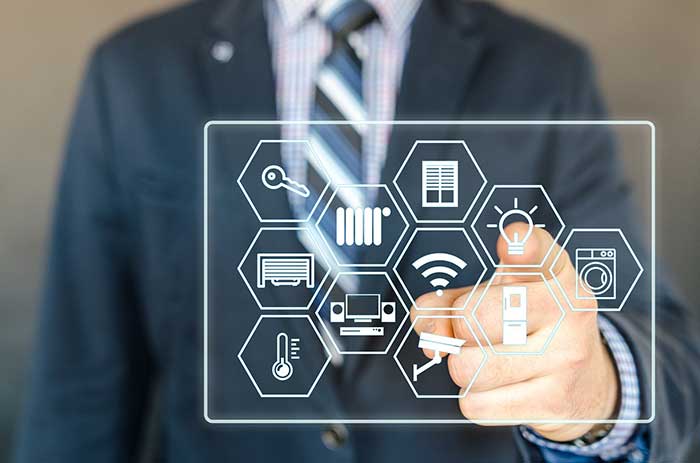
Using Analytics for Green Living: A Tech-Savvy Approach
Share
In today's world, the pursuit of a more sustainable lifestyle is not just a trend but a necessity. With the rapid depletion of natural resources and rising environmental concerns, the importance of adopting green practices is more critical than ever. For tech professionals and enthusiasts, the concept of using analytics for green living offers a unique opportunity to merge technology and sustainability in a meaningful way.

The Role of Analytics in Green Living
Analytics, in the context of green living, provides a powerful toolset for understanding and optimizing our interactions with the environment. By leveraging data, individuals and organizations can make informed decisions that contribute to environmental sustainability. This involves analyzing energy consumption, optimizing resource usage, and ultimately reducing our carbon footprint.
Data-Driven Energy Efficiency
One of the most significant advantages of using analytics is its ability to enhance energy efficiency. By collecting and analyzing data from smart meters and energy monitoring systems, individuals can gain insights into their energy usage patterns. This data can then be used to identify areas where energy is being wasted and implement strategies for improvement.
For instance, tech enthusiasts can explore energy-efficient cooling systems that are designed to minimize energy consumption while maintaining optimal comfort levels. By integrating advanced analytics with these systems, users can further optimize their energy usage, leading to significant cost savings and a reduced environmental impact.
Water Conservation Through Analytics
Water is a precious resource, and its conservation is a critical component of green living. Analytics can play a pivotal role in this area by monitoring water usage and identifying areas where resources can be conserved. Smart water meters and sensors can collect real-time data, allowing users to track their water consumption patterns and make necessary adjustments.
Incorporating automated water conservation tools into homes and businesses can significantly enhance water efficiency. By analyzing data from these tools, users can pinpoint leaks, optimize irrigation schedules, and reduce unnecessary water usage.
Innovative Technologies for Sustainable Living
The integration of analytics with innovative technologies is paving the way for more sustainable living. From smart home automation to AI-driven solutions, tech enthusiasts have a plethora of options to explore. These technologies not only enhance our quality of life but also promote environmental sustainability.
Smart Home Automation
Smart home automation systems have revolutionized the way we interact with our living spaces. By incorporating analytics, these systems can optimize energy usage, automate lighting and temperature controls, and even detect leaks. For instance, a smart home leak sensor can detect water leaks in real-time, preventing water wastage and potential damage.
Moreover, analytics can enhance the functionality of these systems by providing insights into user behavior and preferences. This enables homeowners to create personalized settings that align with their sustainability goals.
AI and Machine Learning in Green Living
Artificial Intelligence (AI) and machine learning are transforming the landscape of green technology. These technologies can analyze vast amounts of data to predict energy consumption patterns, optimize resource allocation, and even recommend sustainable practices.
AI-driven systems can also enhance the efficiency of renewable energy sources, such as solar and wind power, by predicting weather patterns and optimizing energy production. This integration of AI and analytics is a game-changer for tech professionals seeking to contribute to environmental sustainability.
Real-World Applications and Success Stories
The potential of using analytics for green living is evident in various real-world applications and success stories. Companies and individuals are leveraging data-driven insights to make significant strides in sustainability.
For example, organizations are utilizing analytics to track their carbon footprints and develop strategies for reduction. By analyzing data on energy consumption, transportation, and waste management, businesses can implement targeted initiatives that align with their sustainability goals.
Furthermore, tech enthusiasts can stay updated on the latest trends in green technology to discover innovative solutions that can be integrated into their daily lives. By embracing these advancements, individuals can contribute to a more sustainable future while enjoying the benefits of cutting-edge technology.
Conclusion
In conclusion, using analytics for green living offers a unique opportunity for tech professionals and enthusiasts to make a positive impact on the environment. By leveraging data-driven insights and innovative technologies, individuals can optimize resource usage, enhance energy efficiency, and contribute to a more sustainable future.
As we continue to explore the possibilities of green technology, it's crucial to stay informed and embrace new advancements. Whether it's through smart home automation, AI-driven solutions, or sustainable practices, the integration of analytics can pave the way for a greener and more sustainable world.

FAQs
What are the benefits of using analytics for green living?
Analytics provides valuable insights into energy consumption, resource usage, and environmental impact, enabling individuals and organizations to make informed decisions. This leads to increased energy efficiency, reduced carbon footprints, and cost savings.
How can tech professionals contribute to green living?
Tech professionals can contribute to green living by integrating analytics with innovative technologies. This includes developing smart home automation systems, utilizing AI-driven solutions, and exploring sustainable practices.
What are some real-world applications of analytics in green living?
Real-world applications of analytics in green living include energy monitoring, water conservation, and carbon footprint tracking. Companies and individuals are leveraging data-driven insights to implement targeted sustainability initiatives.
